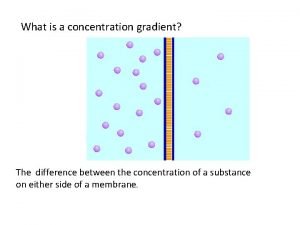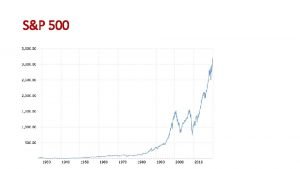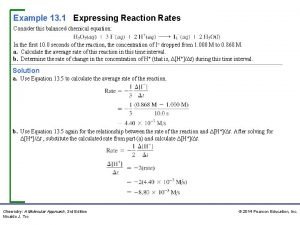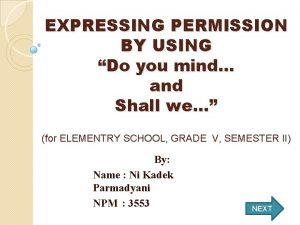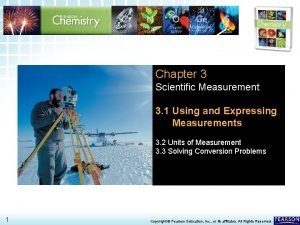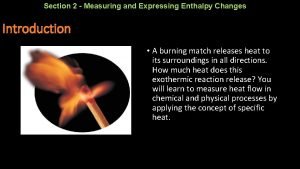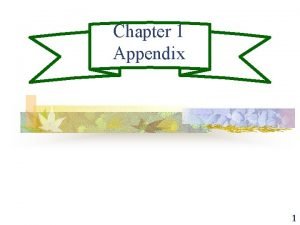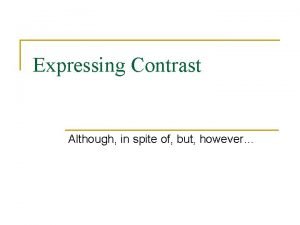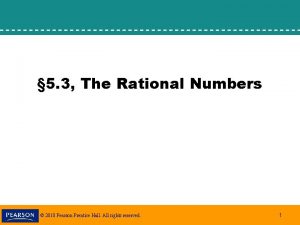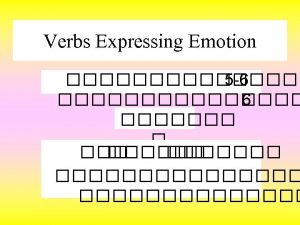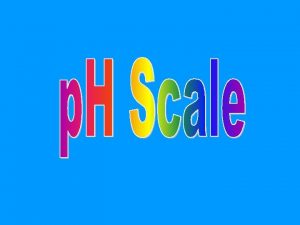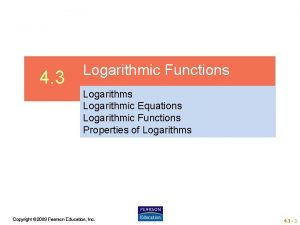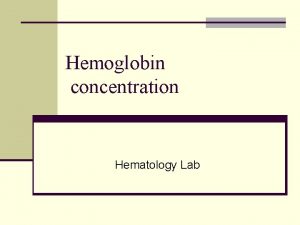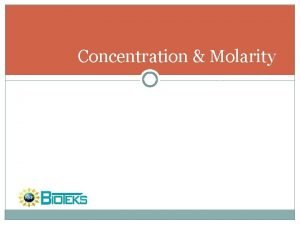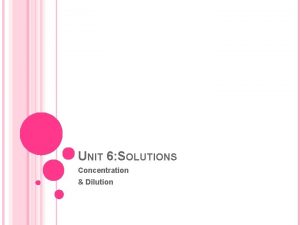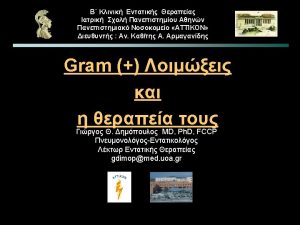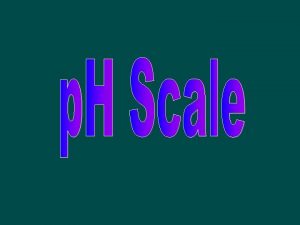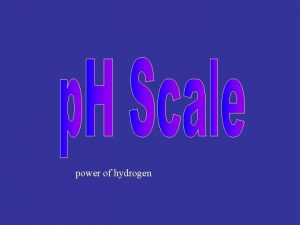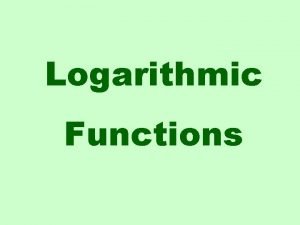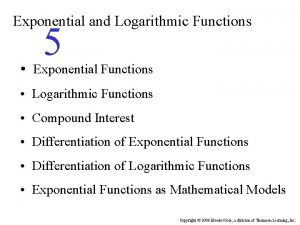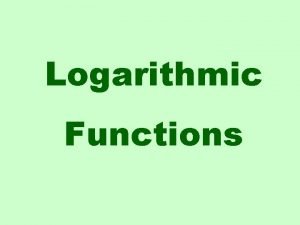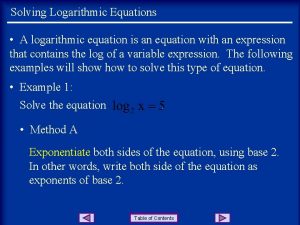p H scale Logarithmic scale expressing H1 concentration


![p. H scale • Logarithmic scale –expressing H+1 concentration, [H+1] • If p. H p. H scale • Logarithmic scale –expressing H+1 concentration, [H+1] • If p. H](https://slidetodoc.com/presentation_image_h2/63e76686113cd6eabda007190285e9a2/image-3.jpg)

![Molarity to p. H To determine p. H: • Express [H+1] in scientific notation Molarity to p. H To determine p. H: • Express [H+1] in scientific notation](https://slidetodoc.com/presentation_image_h2/63e76686113cd6eabda007190285e9a2/image-5.jpg)

![p. H [H+1] p. H 1 M or 1 X 100 M 0 0. p. H [H+1] p. H 1 M or 1 X 100 M 0 0.](https://slidetodoc.com/presentation_image_h2/63e76686113cd6eabda007190285e9a2/image-7.jpg)

![p. H to Molarity p. H = -log[H+1], solve for [H+1] • -p. H p. H to Molarity p. H = -log[H+1], solve for [H+1] • -p. H](https://slidetodoc.com/presentation_image_h2/63e76686113cd6eabda007190285e9a2/image-9.jpg)
![p. OH • • By analogy: p. OH is defined as –log[OH-1] Express [OH-1] p. OH • • By analogy: p. OH is defined as –log[OH-1] Express [OH-1]](https://slidetodoc.com/presentation_image_h2/63e76686113cd6eabda007190285e9a2/image-10.jpg)


![ACID or BASE? • Acids: [H+1] [OH-1] • Bases: [OH-1] [H+1] ACID or BASE? • Acids: [H+1] [OH-1] • Bases: [OH-1] [H+1]](https://slidetodoc.com/presentation_image_h2/63e76686113cd6eabda007190285e9a2/image-13.jpg)


![• If p. H = 4 • [H+1] = ? Antilog(-p. H) = • If p. H = 4 • [H+1] = ? Antilog(-p. H) =](https://slidetodoc.com/presentation_image_h2/63e76686113cd6eabda007190285e9a2/image-16.jpg)
![• If the [OH-1] = 1 X 10 -3 • p. OH = • If the [OH-1] = 1 X 10 -3 • p. OH =](https://slidetodoc.com/presentation_image_h2/63e76686113cd6eabda007190285e9a2/image-17.jpg)
![• If the +1 [H ] =1 x -5 10 M • The • If the +1 [H ] =1 x -5 10 M • The](https://slidetodoc.com/presentation_image_h2/63e76686113cd6eabda007190285e9a2/image-18.jpg)
![[H+] (M) p. H [OH-] (M) 1 x 10 -3 3 1 x 10 [H+] (M) p. H [OH-] (M) 1 x 10 -3 3 1 x 10](https://slidetodoc.com/presentation_image_h2/63e76686113cd6eabda007190285e9a2/image-19.jpg)





- Slides: 24


![p H scale Logarithmic scale expressing H1 concentration H1 If p H p. H scale • Logarithmic scale –expressing H+1 concentration, [H+1] • If p. H](https://slidetodoc.com/presentation_image_h2/63e76686113cd6eabda007190285e9a2/image-3.jpg)
p. H scale • Logarithmic scale –expressing H+1 concentration, [H+1] • If p. H changes by factor of 1, [H+1] changes by factor of 10 • p. H = -log[H+1]

![Molarity to p H To determine p H Express H1 in scientific notation Molarity to p. H To determine p. H: • Express [H+1] in scientific notation](https://slidetodoc.com/presentation_image_h2/63e76686113cd6eabda007190285e9a2/image-5.jpg)
Molarity to p. H To determine p. H: • Express [H+1] in scientific notation • Remember, [ ] means concentration of whatever is inside brackets • The log is the power of 10

Molarity to p. H for Pure water There’s a tiny bit of ionization: H 2 O H+1 + OH-1 • [H+1] = [OH-1] = 1 X 10 -7 M • p. H = -log[H+1] = -(-7) = 7
![p H H1 p H 1 M or 1 X 100 M 0 0 p. H [H+1] p. H 1 M or 1 X 100 M 0 0.](https://slidetodoc.com/presentation_image_h2/63e76686113cd6eabda007190285e9a2/image-7.jpg)
p. H [H+1] p. H 1 M or 1 X 100 M 0 0. 1 M 0. 01 M. 001 M or or Or 1 X 10 -1 1 X 10 -2 1 X 10 -3 M M M 1 2 3

![p H to Molarity p H logH1 solve for H1 p H p. H to Molarity p. H = -log[H+1], solve for [H+1] • -p. H](https://slidetodoc.com/presentation_image_h2/63e76686113cd6eabda007190285e9a2/image-9.jpg)
p. H to Molarity p. H = -log[H+1], solve for [H+1] • -p. H = log[H+1] • Antilog(-p. H) = [H+1] • Say p. H = 5, then –p. H = -5 • Antilog(-5) = 10 -5 • The –p. H becomes the power of 10!
![p OH By analogy p OH is defined as logOH1 Express OH1 p. OH • • By analogy: p. OH is defined as –log[OH-1] Express [OH-1]](https://slidetodoc.com/presentation_image_h2/63e76686113cd6eabda007190285e9a2/image-10.jpg)
p. OH • • By analogy: p. OH is defined as –log[OH-1] Express [OH-1] in scientific notation If [OH-1] = 1. 0 X 10 -3 M Then p. OH = -log(10 -3) = -(-3) = 3

p. H + p. OH = 14 • • • p. H = 3, p. OH = 11 p. H = 7, p. OH = 7 p. H = 10, p. OH = 4 p. H = 9, p. OH = 5 p. H = 1, p. OH = 13

![ACID or BASE Acids H1 OH1 Bases OH1 H1 ACID or BASE? • Acids: [H+1] [OH-1] • Bases: [OH-1] [H+1]](https://slidetodoc.com/presentation_image_h2/63e76686113cd6eabda007190285e9a2/image-13.jpg)
ACID or BASE? • Acids: [H+1] [OH-1] • Bases: [OH-1] [H+1]


p. H range • 0 to 14 – with 7 being neutral • p. H = 0, strongly acidic • p. H = 14, strongly basic
![If p H 4 H1 Antilogp H • If p. H = 4 • [H+1] = ? Antilog(-p. H) =](https://slidetodoc.com/presentation_image_h2/63e76686113cd6eabda007190285e9a2/image-16.jpg)
• If p. H = 4 • [H+1] = ? Antilog(-p. H) = [H+1] Antilog(-4) = 1 x 10 -4 M • p. OH = ? 10 • [OH-1] Antilog(-10) = [OH-1] 1 x 10 -10 M = [OH-1] =?
![If the OH1 1 X 10 3 p OH • If the [OH-1] = 1 X 10 -3 • p. OH =](https://slidetodoc.com/presentation_image_h2/63e76686113cd6eabda007190285e9a2/image-17.jpg)
• If the [OH-1] = 1 X 10 -3 • p. OH = ? • p. H = ? • +1 [H ] p. OH = -log[OH-1] = -log(10 -3) = -(-3) = 3 14 – 3 = 11 =? Antilog(-11) = 1 x 10 -11 M
![If the 1 H 1 x 5 10 M The • If the +1 [H ] =1 x -5 10 M • The](https://slidetodoc.com/presentation_image_h2/63e76686113cd6eabda007190285e9a2/image-18.jpg)
• If the +1 [H ] =1 x -5 10 M • The p. H = ? 5 • The p. OH = ? 14 – 5 = 9 • The [OH-] = ? Antilog(-9) = 1 x 10 -9 M
![H M p H OH M 1 x 10 3 3 1 x 10 [H+] (M) p. H [OH-] (M) 1 x 10 -3 3 1 x 10](https://slidetodoc.com/presentation_image_h2/63e76686113cd6eabda007190285e9a2/image-19.jpg)
[H+] (M) p. H [OH-] (M) 1 x 10 -3 3 1 x 10 -11 p. OH Acidic or Basic 11 A 9 1 x 10 -5 5 B 1 x 10 -2 2 1 x 10 -12 12 A 1 x 10 -8 8 1 x 10 -6 6 B 1 x 10 -9

How to safely test p. H • Instruments – use a p. H meter • Indicators – use a series of indicators • See if the substance reacts with a metal other than Cu, Ag, or Au • NEVER “taste”


Indicator • substance that changes color over narrow p. H range • Use several indicators to narrow down p. H range of substance


 Concentration gradient vs concentration difference
Concentration gradient vs concentration difference Movement of high concentration to low concentration
Movement of high concentration to low concentration S&p500 log scale
S&p500 log scale Ways of expressing the future
Ways of expressing the future Expressing reaction rates
Expressing reaction rates In the help strategy the h stands for healthful
In the help strategy the h stands for healthful Expressing concession exercises
Expressing concession exercises Expressing permission
Expressing permission Using and expressing measurements
Using and expressing measurements Measuring and expressing enthalpy changes
Measuring and expressing enthalpy changes Expressing ability and inability
Expressing ability and inability Expressing future in english
Expressing future in english Expressing interest and indifference
Expressing interest and indifference 17.2 measuring and expressing enthalpy changes
17.2 measuring and expressing enthalpy changes Series of paragraphs
Series of paragraphs Expressing reaction rates
Expressing reaction rates Expressing like and dislike dialogue
Expressing like and dislike dialogue Expressing opinions and feelings
Expressing opinions and feelings Ways of expressing future time
Ways of expressing future time How to do future simple
How to do future simple Though
Though Using and expressing measurements
Using and expressing measurements The expression of congratulation
The expression of congratulation Expressing rational numbers as decimals
Expressing rational numbers as decimals Verb expressing emotion
Verb expressing emotion
